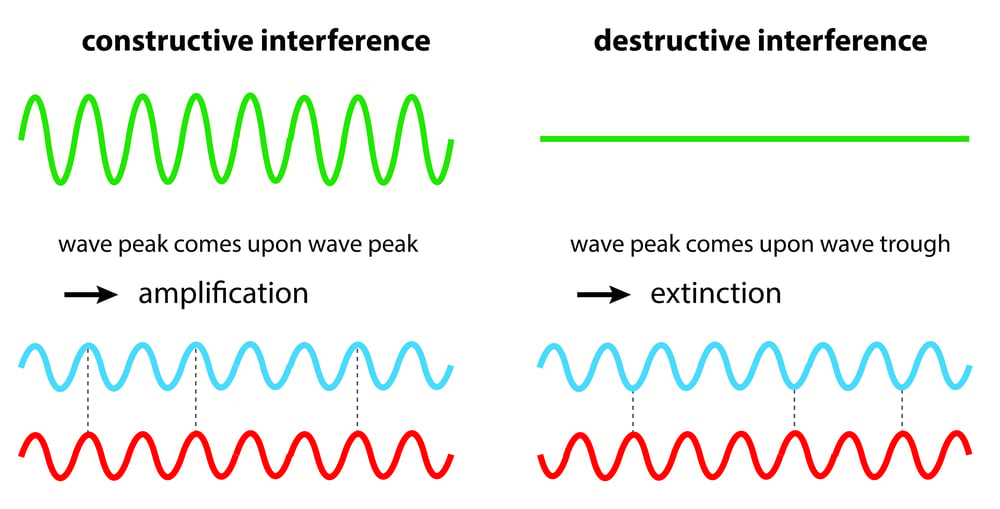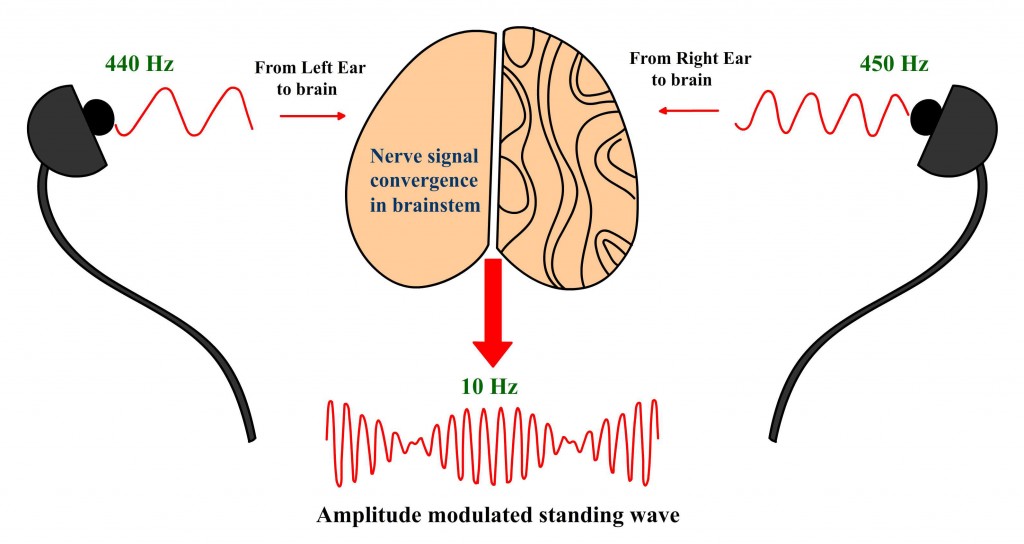Table of Contents (click to expand)
Binaural beats are auditory illusions that occur when two slightly different tones are played in each ear. They are believed to boost attention and mood, and may also help a person relax.
We often turn to music to accompany or alter our state of mind. We tend to gravitate towards melancholic music when we’re sad and euphoric music to celebrate our successes. Most of the time, music is the tool that alters and complements our mood best. Listen to a thumping, inspirational national song and you’re suddenly filled with feelings of immense patriotism; listen to a romantic ballad and you find yourself calling up your truest love.

Among these things, certain music is often prescribed as a way to relax, center your attention and decrease anxiety. You may have come across a specific type of music lauded for having these effects—binaural beats. These beats are seen to have effects of increasing confidence, reducing stress, increasing motivation and focusing an individual. Speaking from my personal experience, they’re my go-to for avoiding procrastination and centering my attention, which easily gets pulled in different directions.
However, what are these beats exactly and how do they affect us in such a way? Let’s find out!
Recommended Video for you:
How Are Binaural Beats Produced?
Sound is perceived when an object vibrates. The vibration displaces the particles in a medium and these particles displace their neighboring one, causing the vibration to eventually hit our eardrum. Sound has certain properties, perhaps most notably, it exists as a wave, which makes it travel in crests and troughs. The wavelength of sound is one complete set of a crest and a trough, while the frequency is the number of wavelengths in a unit time.

Constructive Interference
So, when a particular note is played by a particular instrument, it has a specific frequency that makes it peculiar. Let’s say, for instance, that a guitar is playing the A note at 440 Hz; it produces one crisp sound without any interference. Now, let’s have another guitar play on the same frequency with the same note, an A at 440 Hz.
What happens now? The sound just gets louder as the crest from the first guitar matches the crest of the second perfectly, creating a loud noise at every interval. This is “constructive interference”, which is created when two sounds are in phase and the sound is amplified.

Destructive Interference
Now, let’s change it up a little bit. In this scenario, let’s keep both guitars on the same note and frequency, but let’s have the crest of the first guitar matched with the trough of the second. The sound heard in this instance would be quite soft and completely nonexistent when matched precisely. This is “destructive interference”, when the crests and troughs of two sounds cancel each other out.
This phenomenon gets interesting when the sounds are of slightly different frequencies. In this instance, the first sound from the guitar is the same, 440 Hz. The second one is marginally higher, say 460 Hz. As we initially start playing both the sounds with their crests aligned, one might think that the sound made wouldn’t be much different, but this slight difference creates a wobbling effect. At some intervals, the crest of one sound matches the other, but at other intervals, it doesn’t. This results in a wobbling sound, one that comes on and off at regular intervals as the two sounds repeatedly align and misalign.

This is called beat frequency, and is often used to adjust the tones of two instruments by playing the same note. Where else do we see this phenomenon? You guessed it… binaural beats.
Auditory Illusions
The beat frequency causes an auditory illusion in the brain creating the sound of the binaural beat. To create a binaural beat, two variants of sine waves (waves with a smooth periodic oscillation) with a difference of greater than 40Hz between them are taken. These two pure-tone sine waves must be less than 1500 Hz.
Binaural beats work best with headphones, as the two tones can be presented to each ear separately without distraction. This is also how the practice gets its name, binaural: “bi” – two, and “aural” – relating to the ear or sense of hearing.
So, when you put on a piece of binaural beats in your earphones, the right earpiece may be playing a 440 Hz pure tone, while the left earpiece may be playing a 430 Hz pure tone. You will then hear a third tone, which is the auditory illusion created by your brain in addition to the two pure tones. The third tone is due to the difference between the two tones (10 Hz). You can see this for yourself by removing one earpiece and then adding it back later to see the effect return.
Binaural Beats Benefits
The medical benefits of binaural beats have been a popular topic of research, one that proves to be hit and miss at times.
The repetitive and rhythmic patterns of the beats do help in focusing attention, and there are various frequencies that are believed to invoke a specific response. It is recommended as a way to relax, focus, uplift a person’s mood, increase confidence and achieve a state of flow, among other things. You can download any number of apps or visit various websites where they will advise you on a specific frequency for a specific state of mind you desire. This is because these frequencies relate to those created naturally by our brains.

As mentioned earlier, the difference between the two pure tones playing in each ear is the frequency that the brain creates on its own. The brain produces alpha, beta, gamma, theta, and delta waves when in its various states (as shown in the chart). Hence, it is postulated that hearing binaural beats makes the brain create these frequencies, as the third tone can make it induce those states.
This proposition doesn’t seem farfetched, but the literature is mixed. There has been a very small correlation seen between uplifting study participants’ mood and the use of binaural beats. At times, there appears to be no effect on the person whatsoever.
It also appears that these beats affect each individual differently. Further study with more participants and a longer duration of time is needed to see the effects of binaural beats in a more comprehensive setting, as this will provide further insight into the relationship of these frequencies and our brains!












